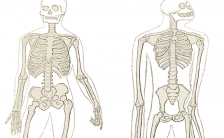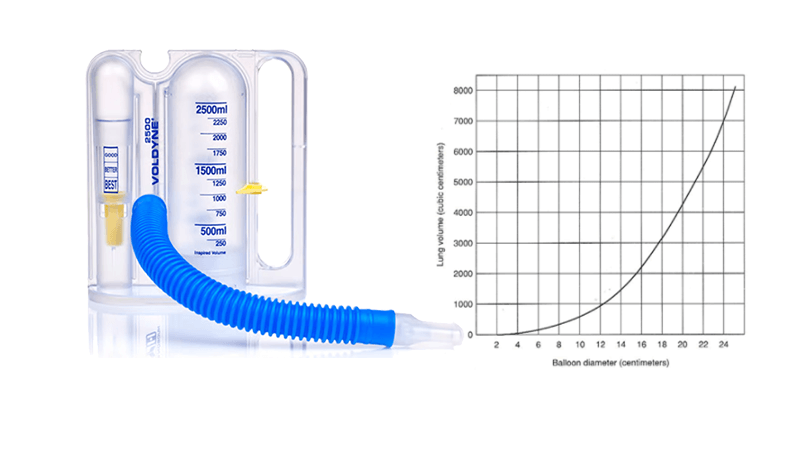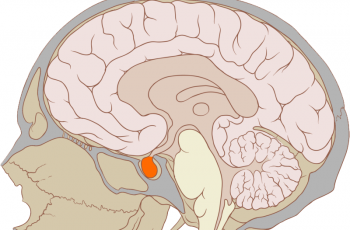Category: Anatomy
-

Bone Matrix Anatomy (Coloring)
Anatomy students learn about the skeletal system, where they examine bones and how the bones fit together to make up an entire skeleton. In addition, some course also explore bone tissue and how bone is formed, repaired, and even broken down to release minerals. The bone matrix is composed of cells called osteocytes…
-

Color the Neuron and Neuroglia
Students can practice what they have learned about neurons with this simple coloring activity. The page shows features of the neuron, such as the axons and dendrites. They will also color the supporting cells of the matrix. There are no instructions, students must identify each of the types of glial cells: oligodendrocytes, astrocytes, microglial cells, ,…
-

Investigation: Stride Length and Bone Lengths
This activity is intended to introduce students to spreadsheets while also reinforcing concepts learned in the unit on the skeletal system. While graphs may be easier to create using google sheets, student can still create graphs by hand using graph paper. Your class will need a set of meter sticks or rules to…
-

What Is an Autopsy?
A short article about autopsies and medical examiners intended for students in anatomy. Students read a detailed description of an autopsy and answer questions that require close reading
-

The Anatomy of the Kidney and Nephron
This coloring worksheet asks students to color the kidney to identify where structures like the medulla, cortex, renal vessels and ureters are located. Another image focuses on an individual nephron to identify the glomerulus, proximal and distal tubules, and the Loop of Henle. This worksheet is intended for advanced students of anatomy. Students will…
-

Compare a Human and Chimpanzee Skeleton
This handout can be used in discussions on the evolution of bipedalism or in any unit on the skeletal system. Students label the bones of the skeleton and make comparisons between the forelimbs, hind limbs, and pelvis. I created this handout to compliment an evolutionary lesson and video from HHMI on the “Origin of Humans”…
-

Investigation: What Factors Affect Lung Capacity
In this investigation, students use balloons and rulers to estimate the vital capacity of lungs using test subjects within the class. To perform the test, subjects take a deep breath and blow into a balloon. The diameter is measured and a graph is used to estimate the volume of air expelled based on the diameter…
-

How to Learn the 12 Cranial Nerves
Learn the 12 cranial nerves with this simple mnemonic and coloring worksheet, appropriate for high school anatomy students.
-

Zoobiquity – Review and Discussion Questions
I try to read at least one non-fiction book per year to try to keep myself up to date and inspired with new knowledge and advances in medicine. I have a classroom set of “Stiff” that I require my AP Biology students to read during the unit on anatomy. Recently, in a graduate class…
-

Comparing a Human and Avian Skeleton
Students often learn the bones of a human skeleton in health, but biology class can reinforce these lessons by comparing the human skeleton to that of other vertebrates. In this case, students color the skeleton of a bird and a human according to the directions. The colors will illustrate how many of the bones…
-

Frog Anatomy Coloring Worksheet
This simple worksheet can supplement a lab or dissection of the frog. Each of the numbers on the frog image corresponds with a text description of the structure and instructions on how to color it. There are a few questions at the end, mainly matching the structure to it’s function, but overall this activity is…
-

Case Study – What’s Wrong with Timothy?
The endocrine system can be a difficult subject to cover in anatomy. It isn’t as showy as the other systems where you can label organs or dissect an eyeball. Students must also memorize a number of hormones and their functions which have complicated names like thyroxine and tri-iodothyronine. When I first started teaching anatomy,…
-

The Anatomy of a Bony Fish
Learn the anatomy of the fish with this coloring worksheet. Student Activity This coloring worksheet. provides a basic overview of the anatomy of a bony fish. Students color the fish according to the directions with each organ and fins being labeled by number. Students will not need a reference to complete the activity, as…
-

Activity: Which Disease Is the Worst?
In this activity, students work in groups to read about different types of diseases and ultimately rank them from the least dangerous to the most dangerous. There is no actual right answer to this, and the cards are designed to foster discussion and provide a basic overview of the types of pathogens that cause…


